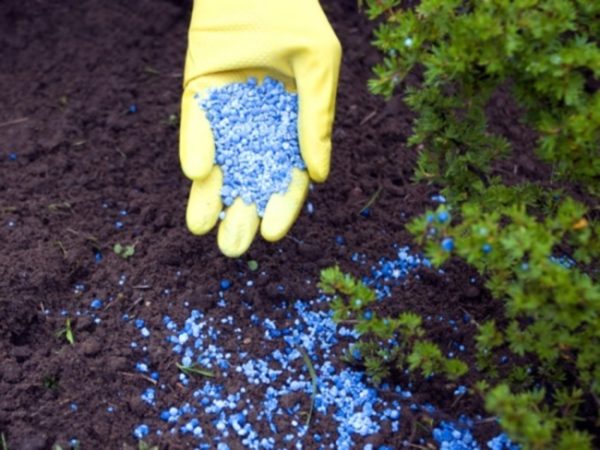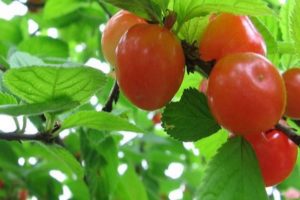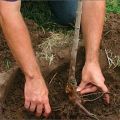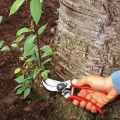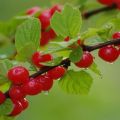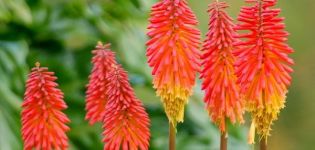How to feed cherries during fruit ripening and after harvesting in summer, spring and autumn
Various varieties of cherries are planted not only in the south, but also in the middle latitudes. This stone fruit plant is not afraid of drought and heat, but does not tolerate excess moisture, does not like heavy soil, and adores fertile soil. With a lack of nutrients in the soil, few berries are tied. Fertilizing cherries helps to raise yields, increase the size of the fruits. The tree reacts well to organic matter and needs microelements. If you do not apply fertilizers, the plant develops poorly and begins to be affected by diseases.
Feeding methods
To improve the structure of the soil, which cherries are very demanding, organic matter is needed. When applying manure, chicken droppings, the earth is loosened.
From mineral fertilizers, when feeding, the tree receives:
- boron and copper;
- selenium and sulfur;
- manganese and iron;
- phosphorus and potassium.
Such components are part of ammonium nitrate, nitroammophoska, superphosphate, urea. Cherry needs nitrogen at the beginning of the growing season.
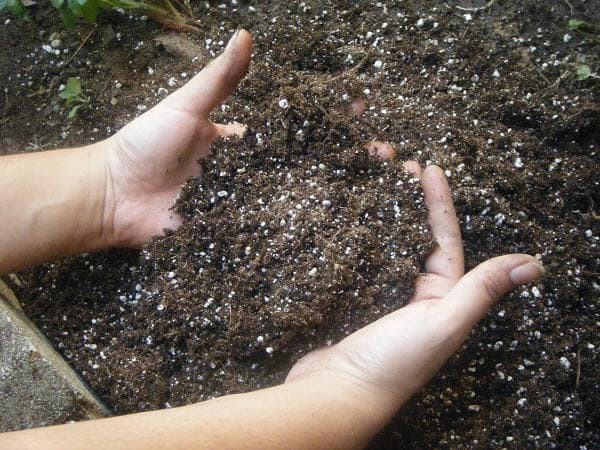
Subroot
For feeding, solutions and dry fertilizers are used. They are introduced into the tree trunk circle, but before that, the earth is necessarily loosened and watered near the cherry. A young plant or seedling needs about 3 buckets of water, an adult up to 60 liters.
When the moisture is absorbed, dry fertilizers are applied at a distance of 0.5-3.5 m from the trunk, which are simply scattered over the surface and covered with a rake. Liquid solutions are poured onto the soil. With this feeding, cherries receive a large amount of nutrients.
Foliar
The branches, leaves and trunk of seedlings of three and four years of age are sprayed with fertilizers, and the root circle is also treated with a liquid solution. The procedure is started on a cloudy day, early in the morning or in the evening. Eyes are protected with goggles, hands - with rubber gloves, respiratory tract - with a respirator. Cherries are processed using a sprayer.
You must try not to overdo it with fertilizers for feeding, since their excess leads to:
- to leaf fall;
- shedding of the ovary;
- to the development of chlorosis.
The tree is sick with a lack of zinc and oversaturation with nitrogen or potassium. Cherries are fed with siderates, which are sown in near-trunk circles, and then mowed and sealed at a shallow depth near the plant. Mustard, vetch, rye, peas are planted on a plot where a garden is laid out next year.
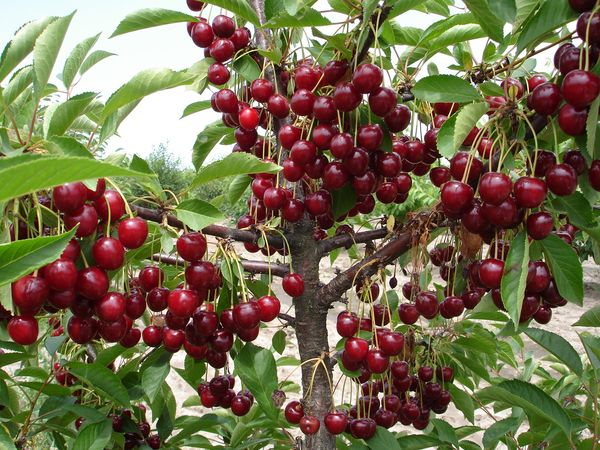
Fertilization dates and rates
Young trees require fewer micro and macro elements than adult cherries. If they are properly fed when planting in the ground, it is no longer necessary to fertilize either in the summer or in the fall of the same year. Potassium chloride - 25 g and superphosphate 40 g - are introduced into the hole prepared for the plant, after watering the soil. Substances are poured by mixing humus with soil and humus.
After planting cherries, in addition to mineral fertilizers, you can also add organic matter in the form of 1 kg of ash and 3 rotted manure. The amount of these substances used for feeding should also not exceed the norm.
In the spring
While the trees are sleeping and the buds have not blossomed, they resort to spraying with Bordeaux liquid. For its preparation, 300 g of copper sulfate and lime are dissolved in a bucket of water. This procedure helps to prevent the growth of fungi, saturates the trees with one of the most important microelements for growth and development.
The feeding scheme for the spring period is drawn up taking into account the age of the plant. Before the flowers appear, 2–4-year-old cherries are sprayed with a carbamide solution. To do this, a matchbox of granules is stirred in a bucket of water. A fertilizer containing nitrogen is applied under the roots.
Adult cherries need feeding three times in the spring. The first time is sprayed with urea. The substance is taken in the same concentration as for young plants. Ammonium nitrate is embedded in the trunk circle.
When the cherry blossoms, fertilizer is prepared for feeding. A liter of mullein and 2 glasses of ash are stirred in 10 liters of water. One bucket is poured under a tree up to 7 years old, under an older cherry - 20-30 liters of nutrient liquid.
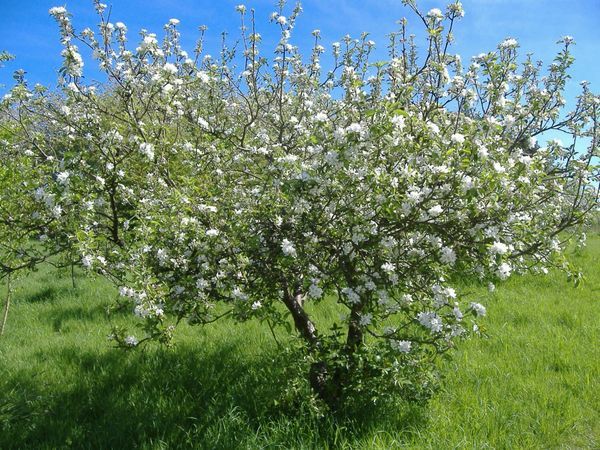
To prevent the ovary from crumbling, after 2 weeks the roots are fed with a solution, for the preparation of which it is taken:
- 35 g superphosphate;
- a spoonful of potassium sulfate;
- 10 liters of water.
You cannot use such substances in large doses, since this will not increase the yield, moreover, you can harm the plant.
Berries will be tastier if you spray the cherries with succinic acid, which only needs a third of a gram per bucket of water to feed.
In order for garden trees to please with a harvest of fruits, you must:
- Check soil acidity indicators.
- Fertilizer is applied to wet soil.
- During flowering, attract bees with honey.
If white spots appear on the surface of the earth, ash or lime is introduced into the trunk circle. Acid - citric, acetic, malic acid is added to alkaline soil for feeding.
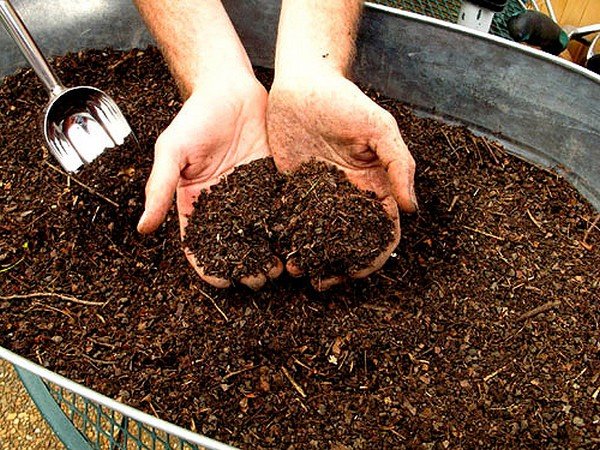
Summer
Saplings and young trees do not need to be fertilized either in July or in August. For non-fruiting cherries, those nutrients that are present in the soil are enough. Plants on which berries are already tied are fed in early summer. Nitroammofosk is introduced into the near-trunk circle, one and a half tablespoons of the substance are dissolved in a bucket of water.
In August, the trees are fertilized with superphosphate, using 25 g of powder per 10 liters of liquid. You can replace the mineral agent with 2 glasses of ash. Correct feeding at the end of summer will help to set the buds by the next year.
In autumn
To restore the depleted land, help the cherries to endure the winter frosts normally, after the fruits ripen, fertilizers are necessarily applied, and the trees are pruned. In the near-stem circle of plants up to 4 years old, add a bucket of water mixed with 25 g of potassium sulfate.
In September and until the end of October, 3 or 4 kilograms of humus are applied to a depth of 15 cm, but top dressing is done not every autumn, but once every 3 years.
Trees that are already bearing fruit are fertilized with superphosphate. One cherry is enough 300 g of granules of the substance. Ash is poured under the plant at the rate of a glass of 10 liters of water. Once every few years, up to 4 buckets of compost are embedded in the trunk circle to a depth of 20 cm.
For the winter, after the first small frosts, the cherries are sprayed with a carbamide solution.
Seven-year-old plants and older in October are fed with superphosphate in an amount of no more than half a kilogram, about a glass of potassium chloride is introduced into the ground. Cherries need such feeding every 3 years. Every autumn trees are sprayed with urea and watered abundantly, using up to 10 liters of liquid per adult plant.
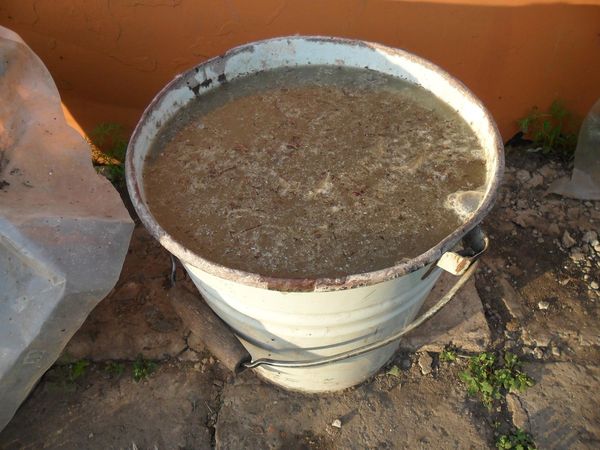
Special care for cherries
Summer residents and owners of suburban areas who care about stone fruit crops, do not forget about feeding, can count on a harvest of tasty and large berries. Trees need moisture, nutrients, pest protection, disease prevention and annual pruning.
When planting seedlings
In order for a young tree to start and begin to develop, in the fall they prepare a hole into which they pour:
- rotted manure - 2 buckets;
- potassium salt - 1 spoon;
- wood ash - 1 kg;
- superphosphate - 2 tbsp. l.
Saplings need more moisture than adults. In dry weather, they are watered every 2 weeks. The first feeding for such cherries is needed after 2 years, they have enough nutrients that were introduced during planting.
Young trees
Plants that are not yet happy with berries are fertilized with organic matter in the form of compost, manure. Cherries that have already begun to bear fruit are fed at least 3 times during the growing season. Seven-year-old trees need additional minerals after a year.
During flowering
Root feeding with stone fruit organics is necessary when the buds begin to open. A bucket of water is poured under a young tree, in which a kilogram of mullein is dissolved; for plants over 7 years old, the amount of substance increases by 2 times.
When fruiting and after harvest
To increase the yield, cherries are fed with fertilizers containing potassium and phosphorus. Superphosphate and ash are brought in in autumn. This contributes to the enlargement of the berries. After the first frost, the trees are sprayed with a carbamide solution. In order for a young cherry to overwinter normally, they are watered with 5 buckets of water, an adult will need at least 100 liters.
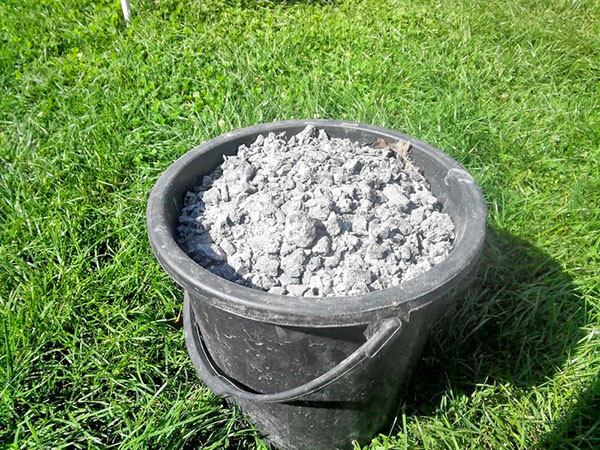
Features of feeding an old tree
To prevent dried branches from drawing out juices, stone fruit crops are often cut off after 7 years. It also helps to rejuvenate the plant. The rate of fertilization is affected by the fertility of the soil, the condition of the tree. Cherries over 12 years old need up to 60 kg, and after 20 - almost 80 humus.
For feeding, the required amount of superphosphate increases, they also need more ammonium nitrate than young plants. Root feeding is carried out every 3 years.
Types and characteristics of funds
Cherries need both organic matter and mineral fertilizers. They are introduced into the soil after watering. The use of some of them is preferable in the spring, others - for feeding in the autumn months or during flowering.
Urea
In order for the plant to gain green mass faster, carbamide is used. The substance, which is produced in the form of granules, is dissolved in water and sprayed with it on trees. For root top dressing, carbamide or urea is combined with potassium salt... For one young cherry, from 50 g of fertilizer is used, for an old plant - up to 300.
For the prevention of coccomycosis, which is caused by pathogenic fungi, 30 grams of the substance is stirred in a bucket of water. Trees are treated with this composition in autumn.
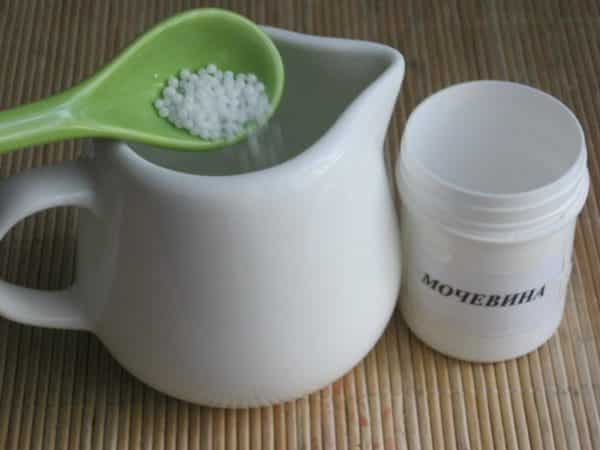
Superphosphate
Mineral fertilizer, which contributes to the rejuvenation of stone fruit crops, participates in the formation of roots, improves the taste of berries, contains phosphorus. With a lack of this trace element, the leaves acquire a purple color, become covered with yellow spots. When feeding, superphosphate goes well with nitrogen. It needs no more than 150 g per square meter.

Potash fertilizers
To accelerate growth, improve the development of the root system, increase resistance to frost and drought, cherry trees are fed with potassium chloride.Fertilizer, which is produced in granules, has a positive effect on the taste of berries and helps to increase the yield.
To strengthen the immunity of garden plants, to facilitate the supply of nutrients, potassium salt is used for feeding. For an adult cherry, 100 g of the substance is enough, for a seedling - up to 40.
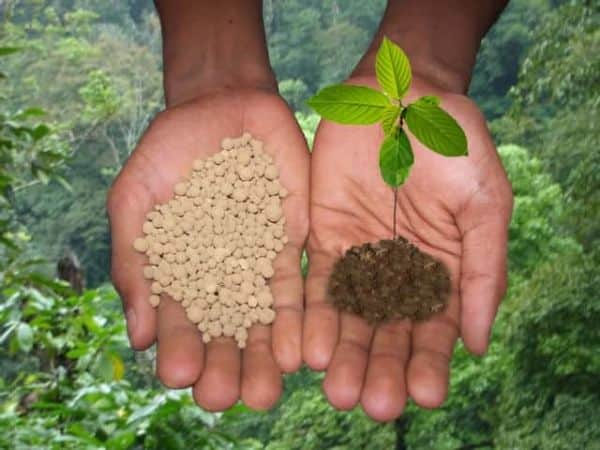
Ammonium nitrate
Instead of urea, fertilizer is sometimes applied under the tree, in which nitrogen is present. Thanks to top dressing with such a remedy, the taste of berries improves, and the growth of green mass is accelerated. Ammonium nitrate is applied under a seedling in an amount of 150 g, for an adult cherry, the dosage is doubled.

Compost
Organic fertilizers are used when it is necessary to improve the structure of depleted soil, to saturate it with nutrients. Gardeners independently prepare compost for feeding. To do this, peat is poured into the container, leaves, tops are placed on top and poured with chicken droppings diluted in water in a ratio of 1 to 20. After 10 days, add to the soil mixture:
- superphosphate - 1 kg;
- copper sulfate - glass;
- ammonium nitrate - 400 g.
Pour earth on top, cover with foil. For feeding, half a bucket of compost is introduced under the seedling, an adult cherry needs up to 30 kg of it.
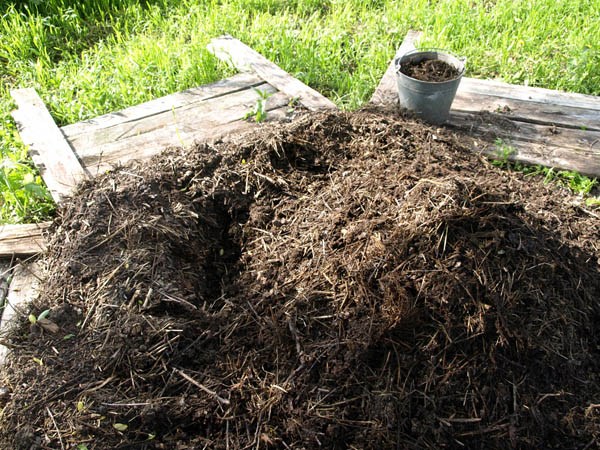
Ash
It is possible to increase the resistance of trees to frost, normalize the water balance, and saturate the soil with microelements if you use such an organic fertilizer as ash. The substance is rich in:
- calcium;
- magnesium;
- iron;
- zinc.
The tool is used for introduction into the ground and for foliar feeding. Thanks to ash, metabolic processes are accelerated in plants.
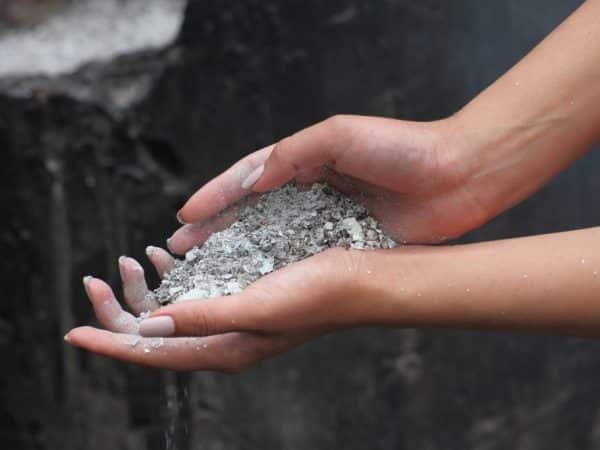
Lime
Cherries do not like sour soil. A tree planted on such a site does not develop well, does not please with sweet berries. Lime is used to change the composition of the soil. In addition, the product strengthens the roots of plants, saturates the earth with potassium. The substance is applied every 5 years.
For the prevention of coccomycosis, 2 kg of lime is stirred in a bucket of water, 300 g of copper sulfate are added. The solution is used to whiten tree trunks.

Dolomite
To improve the composition of the soil, reduce acidity, saturate the earth with microelements in the form of nitrogen, magnesium, phosphorus, along with lime, dolomite flour is used for feeding. The substance is introduced into the soil in any season at 600 g per sq. meter. The tool promotes the reproduction of beneficial microorganisms, negatively affects the pests of horticultural crops.
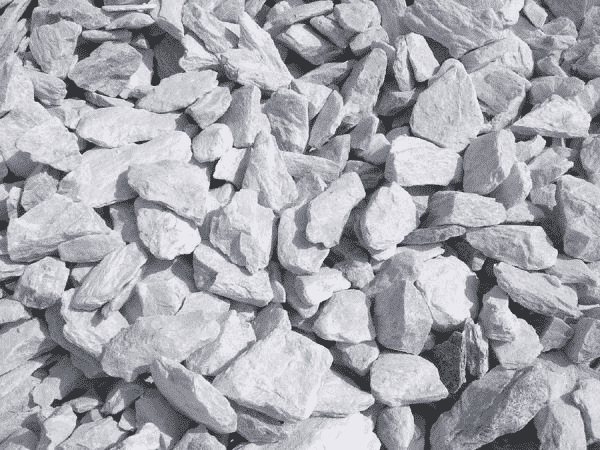
Mineral solutions
In the spring, cherries are fertilized using the foliar method. For this, weak compositions are prepared and the crown of trees is sprayed. The leaves quickly absorb mineral mixtures, which contributes to the growth of shoots, improving flowering.
Calcium and copper, present in the Bordeaux liquid, prevent the growth of fungi and protect against insects. Thanks to feeding with manganese, the yield increases, the amount of sugar in the berries increases.
Zinc prevents the development of diseases, has a beneficial effect on stone fruit crops.
